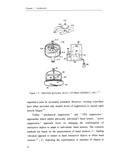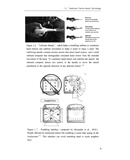书籍详情
![《基于增强现实的适老化交互设计研究》[28M]百度网盘|亲测有效|pdf下载](/uploads/s0309/284e798048c98394.jpg)
![《基于增强现实的适老化交互设计研究》[28M]百度网盘|亲测有效|pdf下载](/uploads/s0309/284e798048c98394.jpg)
基于增强现实的适老化交互设计研究
- 出版社:科技生活自营旗舰店
- 出版时间:2020-08
- 热度:11567
- 上架时间:2024-06-30 09:08:33
- 价格:0.0
书籍下载
书籍预览
免责声明
本站支持尊重有效期内的版权/著作权,所有的资源均来自于互联网网友分享或网盘资源,一旦发现资源涉及侵权,将立即删除。希望所有用户一同监督并反馈问题,如有侵权请联系站长或发送邮件到ebook666@outlook.com,本站将立马改正
内容介绍
内容简介
震颤是常见的运动障碍性疾病,表现为手、头部及身体其他部位不自主性、节律性、振动性运动。由震颤疾病产生的各种功能障碍会长期困扰着震颤患者行走以及和计算机、家用电器等设备的交互,严重影响患者的生活质量。震颤的发生机理至今尚未明确,病因难以确定,且面临着临床治愈率低、副作用大等问题。使用阻尼器械和功能电刺激来物理地抑制肢体震颤的手段,在使用中易引起身体疲劳和疼痛等问题。
《基于增强现实的适老化交互设计研究(英文)》提出并验证了AR技术对辅助震颤患者在键盘和环境交互方面的有效性和可行性。相较于传统医疗和物理抑颤手段,《基于增强现实的适老化交互设计研究(英文)》提出的技术手段具有对震颤患者身体无伤害。且支持人机交互的优势。
《基于增强现实的适老化交互设计研究(英文)》提出并验证了AR技术对辅助震颤患者在键盘和环境交互方面的有效性和可行性。相较于传统医疗和物理抑颤手段,《基于增强现实的适老化交互设计研究(英文)》提出的技术手段具有对震颤患者身体无伤害。且支持人机交互的优势。
作者简介
王凯,毕业于日本大阪大学基础工学研究科智能系统科学专业,现为武汉理工大学讲师、硕士生导师。研究方向包括增强现实、人机交互、人工智能。主持重量项目2项,发表SCI 1区论文2篇。



